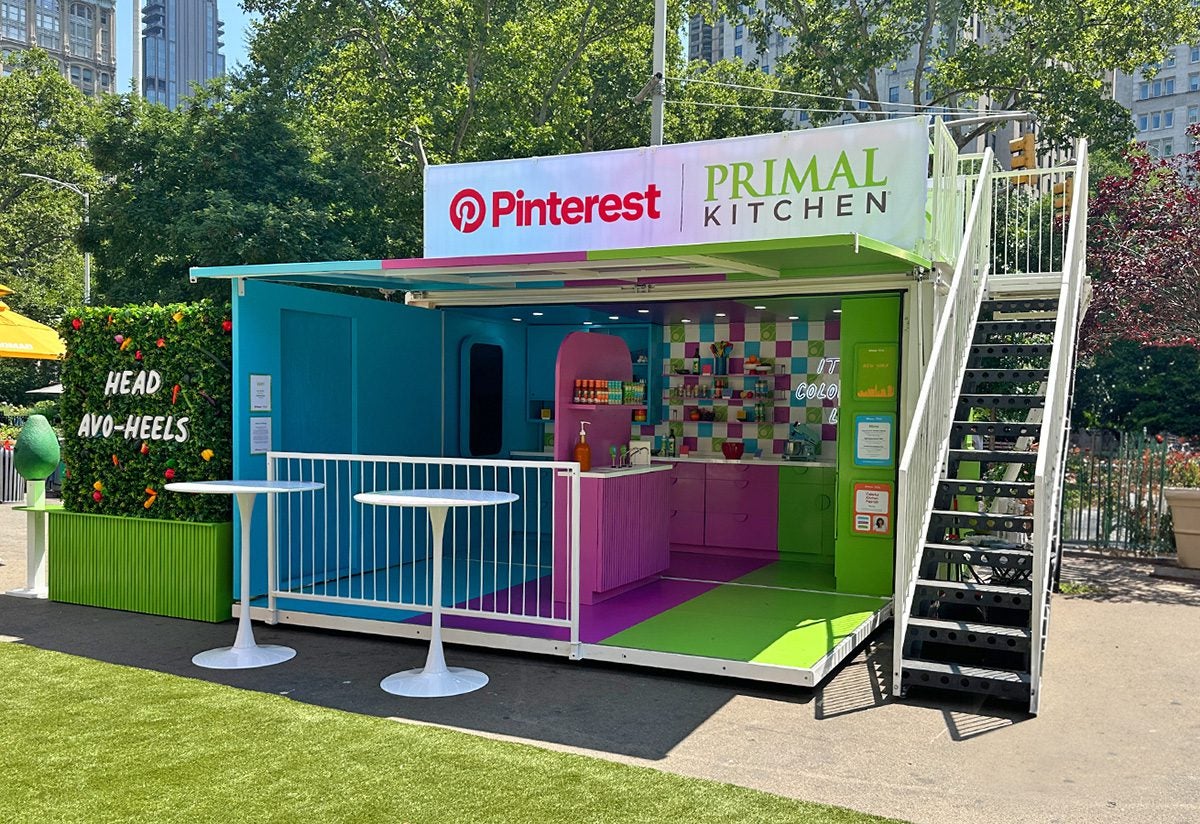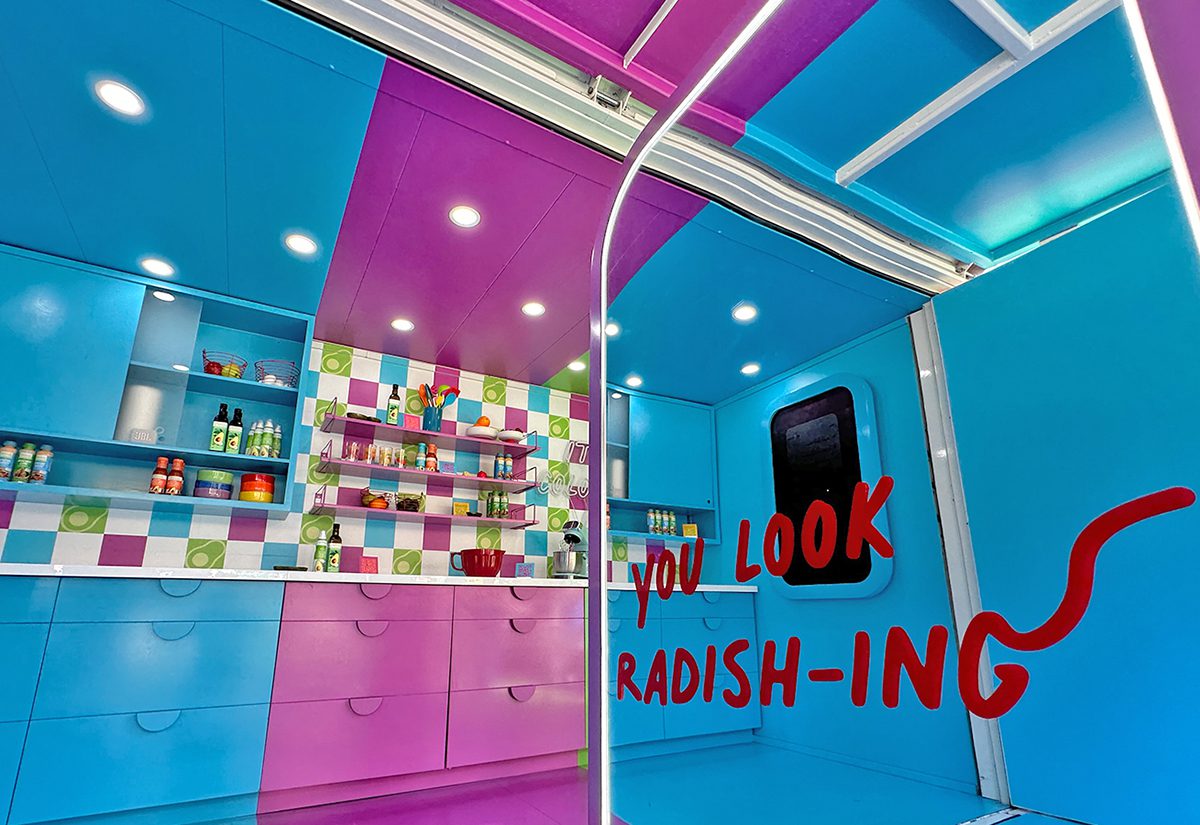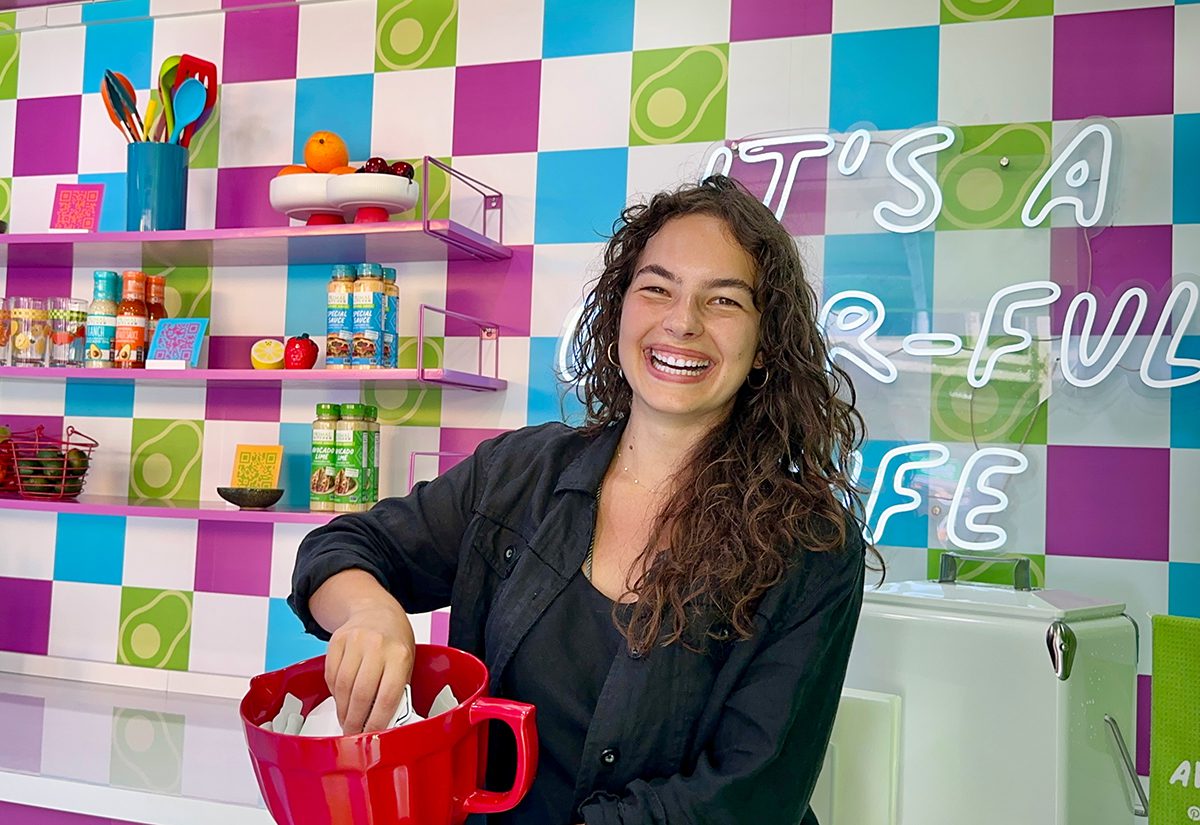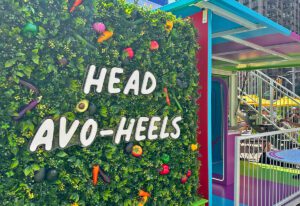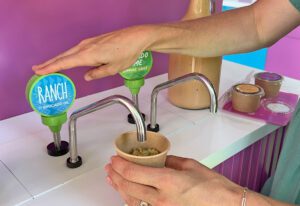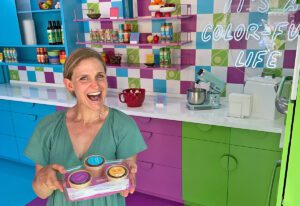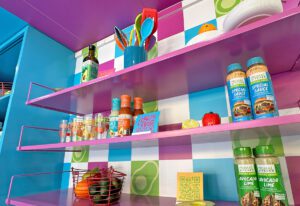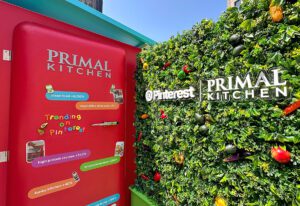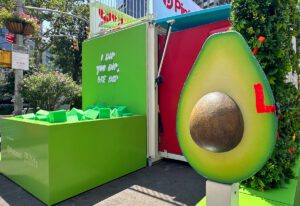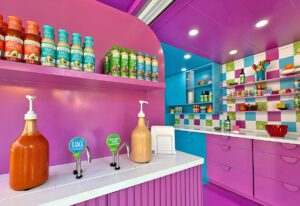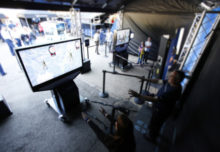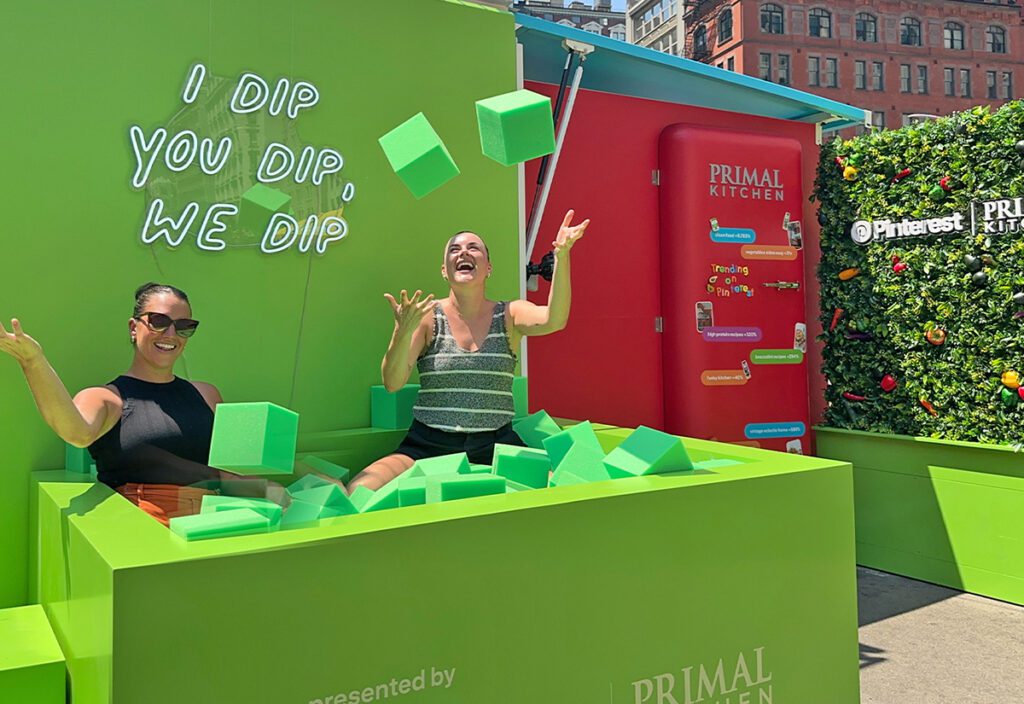 Digitally native CPG brands often find themselves in a pickle when it comes to driving trial and conversion. So when Pinterest user data revealed that searches for “clean food” have risen by more than 9,700 percent and searches for “dips and snack hacks” have increased by 100 percent, clean-eating condiment brand Primal Kitchen decided to take its online business into the wild.
Digitally native CPG brands often find themselves in a pickle when it comes to driving trial and conversion. So when Pinterest user data revealed that searches for “clean food” have risen by more than 9,700 percent and searches for “dips and snack hacks” have increased by 100 percent, clean-eating condiment brand Primal Kitchen decided to take its online business into the wild.
Primal and Pinterest partnered up for a three-city Colorful Kitchen Pop-Up campaign rooted in the social media platform’s data on top food and kitchen trends. The duo strategically timed the event series to grilling season, kicking things off July 17-18 in New York, then hitting Chicago on July 23 and Los Angeles on July 28. With their sights set on millennials and Gen Z, the brands spiced up the typical culinary activation, handing the reins to foodie influencers and turning Pinterest’s digital f&b and décor trends into IRL experiences.
Among touchpoints within the two-story pop-up, attendees could sample Primal Kitchen dips and sauces on tap, jump into a “dip pit,” explore the event design to experience the latest kitchen décor trends (gray is out, vibrant colors are in), snag free products and swag, snap photos against a “salad wall” and oversized refrigerator, learn cooking hacks, and even watch creators and brand ambassadors battle “the paparazzi.”
“We love to test and learn, and this year felt like the right time to make an investment. We had the perfect partner with the right trends, and that went perfectly with our consumer. We felt like this was the right next step for the brand,” says Ana Goettsch, head of marketing at Primal Kitchen.
To learn more about the secret sauce behind the Colorful Kitchen Pop-Up, we asked Goettsch for her insights. (Agency: CNC Agency)
A Flexible Footprint
The Colorful Kitchen was housed in a shipping container that opened up into a two-story footprint in each city. With multiple events to activate, Goettsch says the brands needed a flexible format.
“We knew we wanted to go to multiple cities and have it be very pop-up-friendly,” she says. “We thought [the top level] would be so cool for cities like New York and Chicago to be able to see the skyline and be immersed in this Pinterest trends experience with color and flavor and real food all over,” she says.
Mapping Back to Digital
Primal Kitchen is a top-pinned brand on Pinterest and is currently sponsoring the platform’s “Kitschy Kitchen” trend, which inspired the pop-up’s vibrant color scheme. So to give attendees another avenue for engagement while mapping back to their data-driven strategy, the pair implemented what Goettsch calls visual “trend cues” (think: a mirror photo with a “You Look Radish-ing” message on it), as well as QR codes peppered throughout the space that drove consumers back to Pinterest to explore the products or recipes they were enjoying on-site. At the same time, consumers could take home physical recipe cards that accompanied each dish.
“I think it pulls together a lot of the ways the modern marketer thinks about their consumer: it’s digital, it’s in person, it’s community-building, it’s exploring. It’s not this hard sales pitch at people,” she says.
Creator Curation
When the goal is to drum up buzz and catapult brand awareness, influencer partnerships are often a key piece of the amplification puzzle. Such was the case for Primal Kitchen and Pinterest, which enlisted culinary creators local to each market for the campaign: Carolina Gelen in New York and Jeri Mobley in L.A. (The Chicago experience and menu were based on major food trends.)
The influencers were recruited to help craft the sampling experiences and curate menu items in their respective locations, all of which were based on Pinterest trends, and showcased Primal Kitchen’s core condiments and new dipping sauces. Gelen and Mobley were additionally on hand throughout the events to meet with attendees and teach them their top cooking tips and hacks.
Driving to Retail
A critical part of Primal Kitchen’s business is working with retail partners to get its products on their shelves and, ultimately, into consumers’ hands. During the pop-up events, the brand implemented tactics designed to drive attendees to its grocery store partners local to each market, including offering product discount codes to those who participated in on-site event surveys.
“One of the other really unique ways we connected consumers to the shelf from this event is through Pinterest. When you scanned some of the recipes—and on all the tables and trays and dip taps we had QR codes—they connected to Pinterest and people could get connected directly to their retailer,” Goettsch says. “That’s not a high KPI for us, but it is a very unique opportunity for us to measure: Is there an impact in-store, and how does that drive the business and the brand forward?”
Speaking of gauging impact, Goettsch says the top KPIs for the Colorful Kitchen Pop-Up were generating buzz and boosting awareness.
“This one is all about buzz for us, so how much excitement and buzz did we create from a creator perspective, from an earned media perspective, from a consumer perception at the event,” she says. “Just creating buzz in unique ways—that was our topline goal.”


